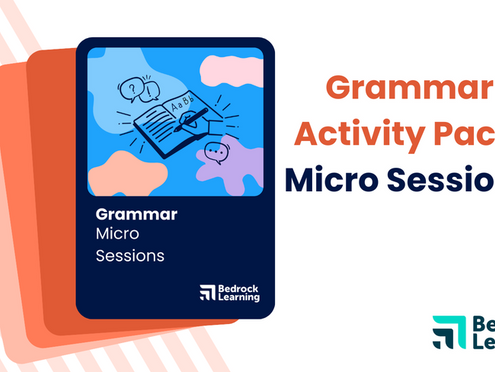What is morphology?
In linguistics, morphology is the study of how words are constructed.
This includes:
- How words are formed from suffixes and prefixes - together, known as affixes
- How words relate to one another through common roots
When broken down into their roots and affixes, it becomes much easier to understand unfamiliar vocabulary. For example, if a learner is encountering the word autobiography for the first time, and they don't know what it means, but they do know that auto means 'self', bio means 'life' and graphy means 'story', you can get an idea that an autobiography is a self-life-story of some kind. From this starting point, it is much easier for the learner to access the context this new word has been used in, and develop their confidence exploring new, ambitious vocabulary.
Even the word morphology itself can be broken down: the root word, morph, means shape, and the suffix ology means 'to study' - together, the definition of morphology is the study of shapes. In this case, the shape in question is the construction of words.
Using what you learned from the words biography and morphology, what do you think biology means?
Why is morphology key to literacy?
Knowing the most common word roots empowers students of all abilities to break words down and decode their meanings. As they independently decipher unfamiliar words, they unlock new vocabulary. This illuminates new concepts and improves literacy across and beyond the curriculum.
This means an understanding of morphology can:
- Widen vocabulary – especially Tier 2 and 3 terms critical to academic success
- Improve spelling – from helping learners use the correct spelling of a prefix (like ‘in’ versus ‘im’) to spelling complex roots such as ‘psych’ or ‘socio’
- Foster independence and confidence in decoding new words
- Improve literacy by enhancing understanding of complex texts across the curriculum
- Create an appreciation and enjoyment of the English language and written works
- Prepare students for the next stage of their education
These aren’t the only reasons to teach morphology. Morphology is key to narrowing word gaps, as it gives learners with smaller vocabularies the tools to break language down into composite parts. In addition, the ability to decode unfamiliar language is crucial in the unseen element of GCSE English papers, where students encounter new and unknown language.
Overall, morphology has the power to unlock language and level the playing field - can you afford not to teach it?

Unlock new vocabulary with Bedrock Learning
Increase learners' confidence in breaking down the meaning of unfamiliar words.
Examples of common roots and affixes
Common Greek root examples
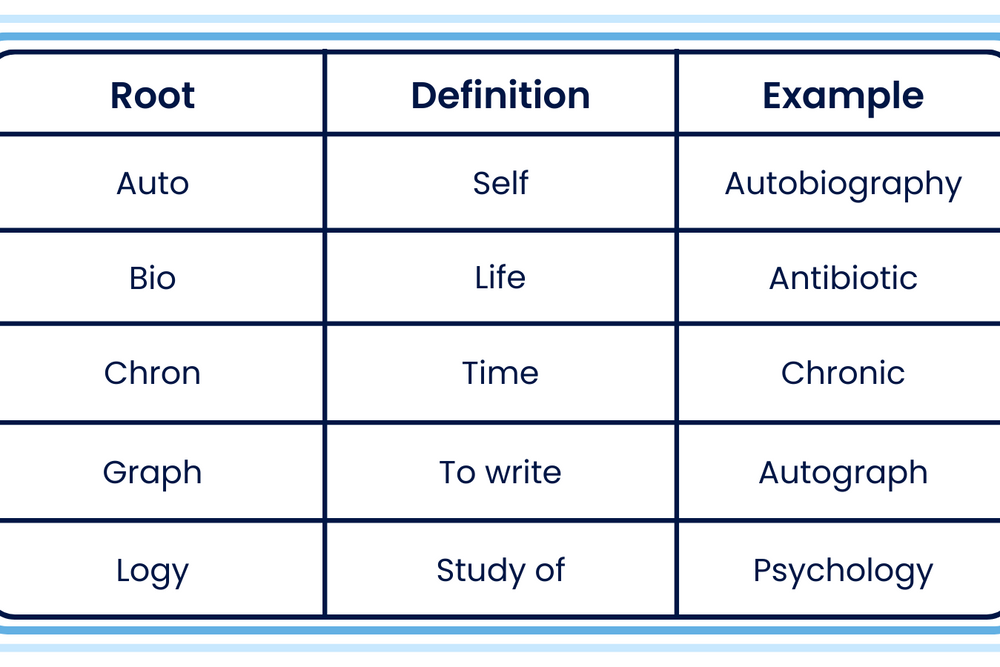
Common Latin words examples
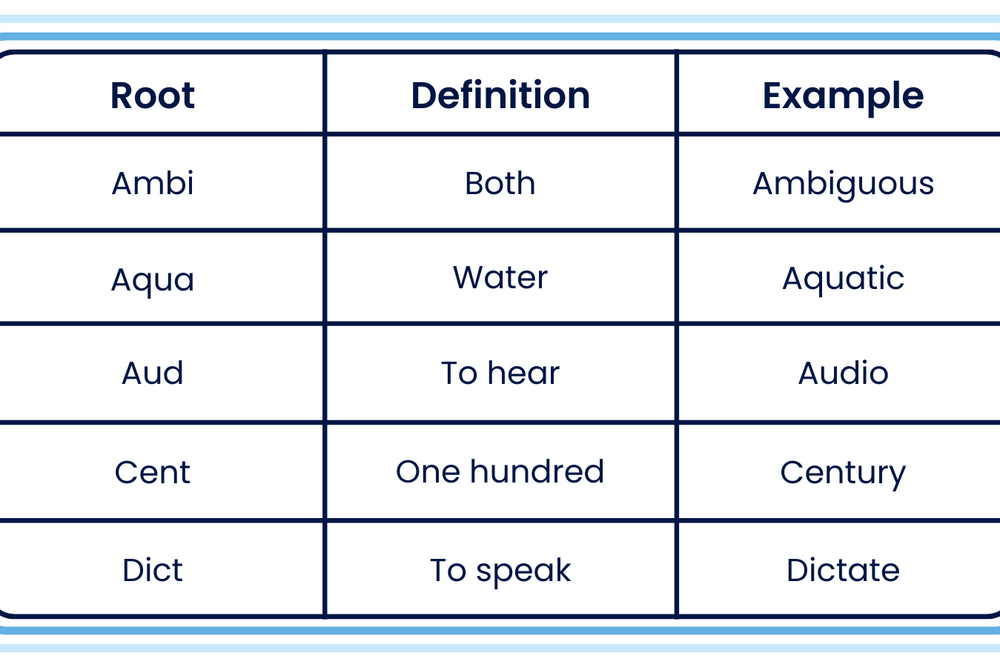
Common prefix examples
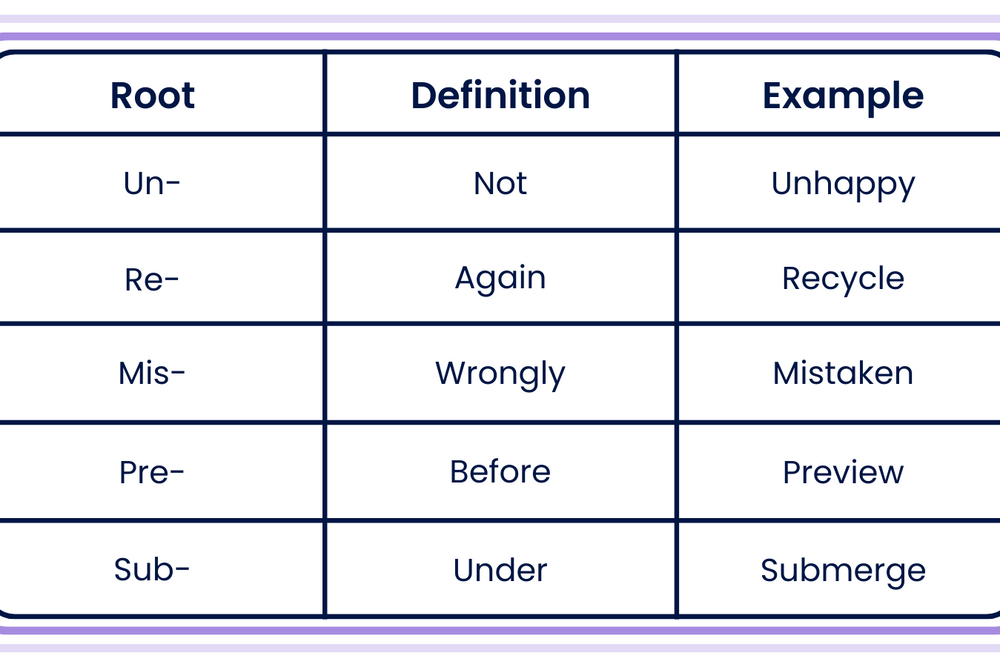
Common suffix examples
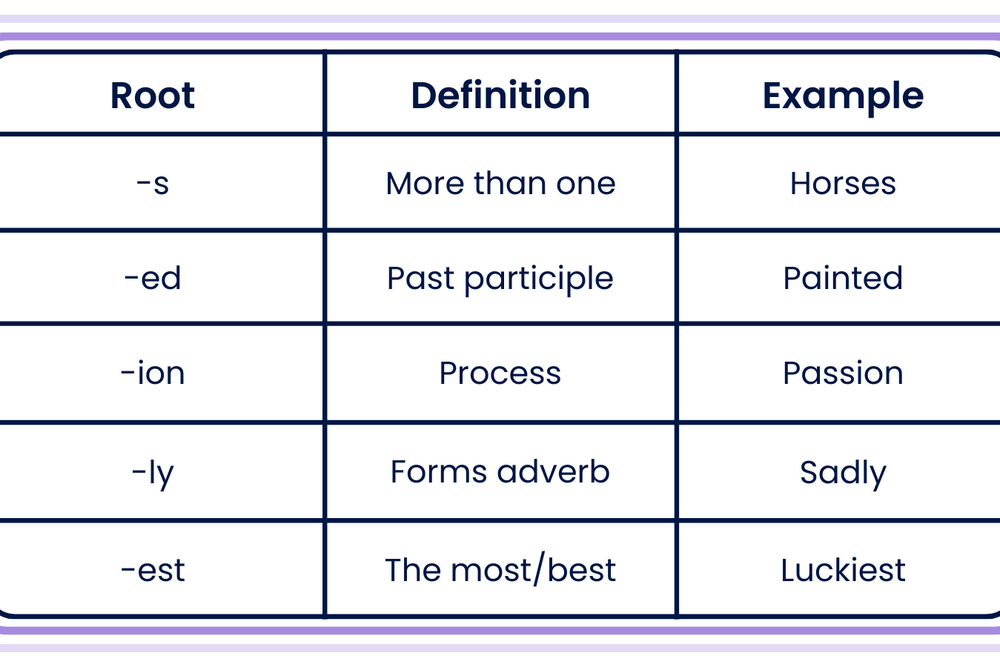
Bedrock Learning's vocabulary topic, Common Roots, explores the basics of morphology through original fiction and non-fiction prose and bespoke writing activities. If you're unsure where to start when incorporating morphology into your literacy strategy, Bedrock Vocabulary is a great place to start.



